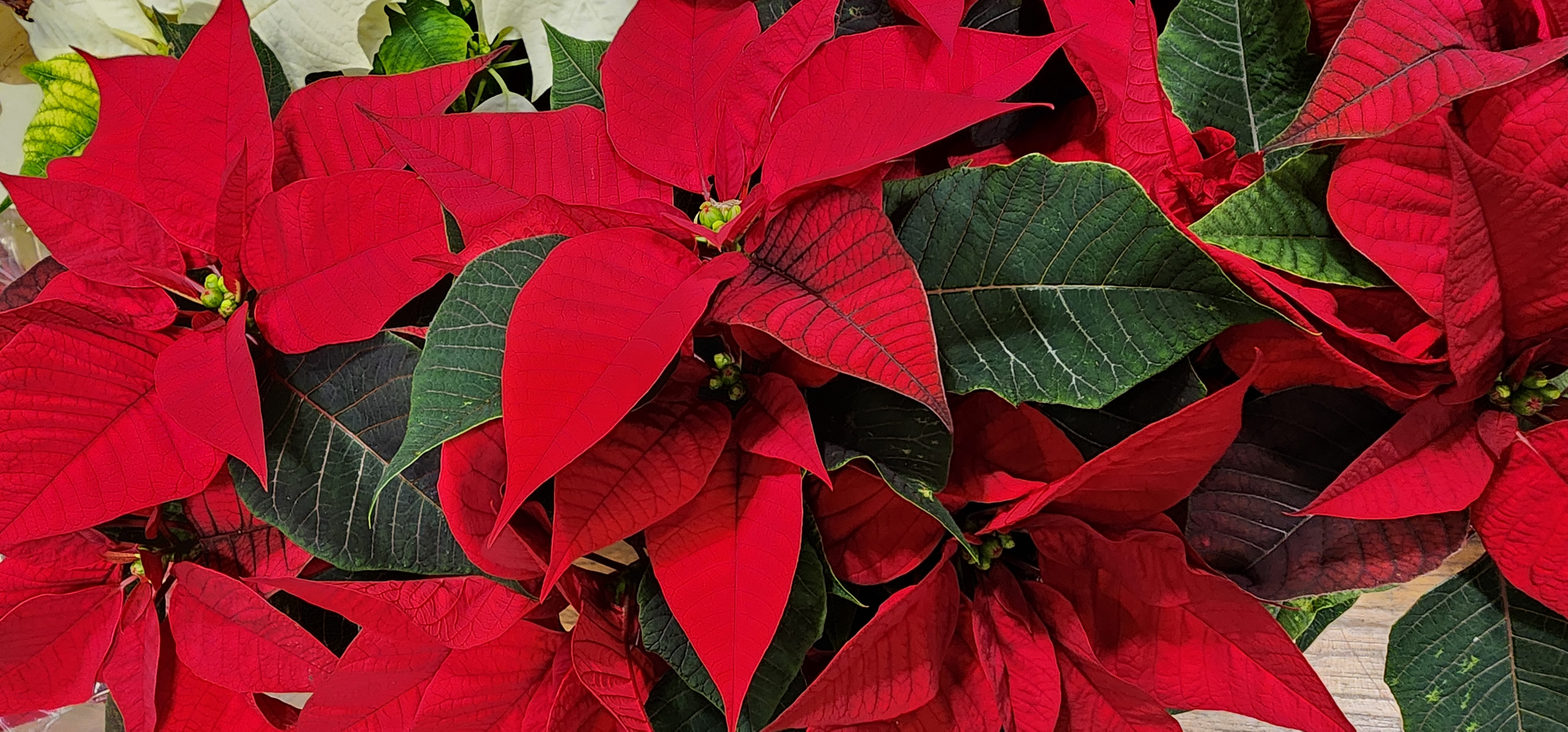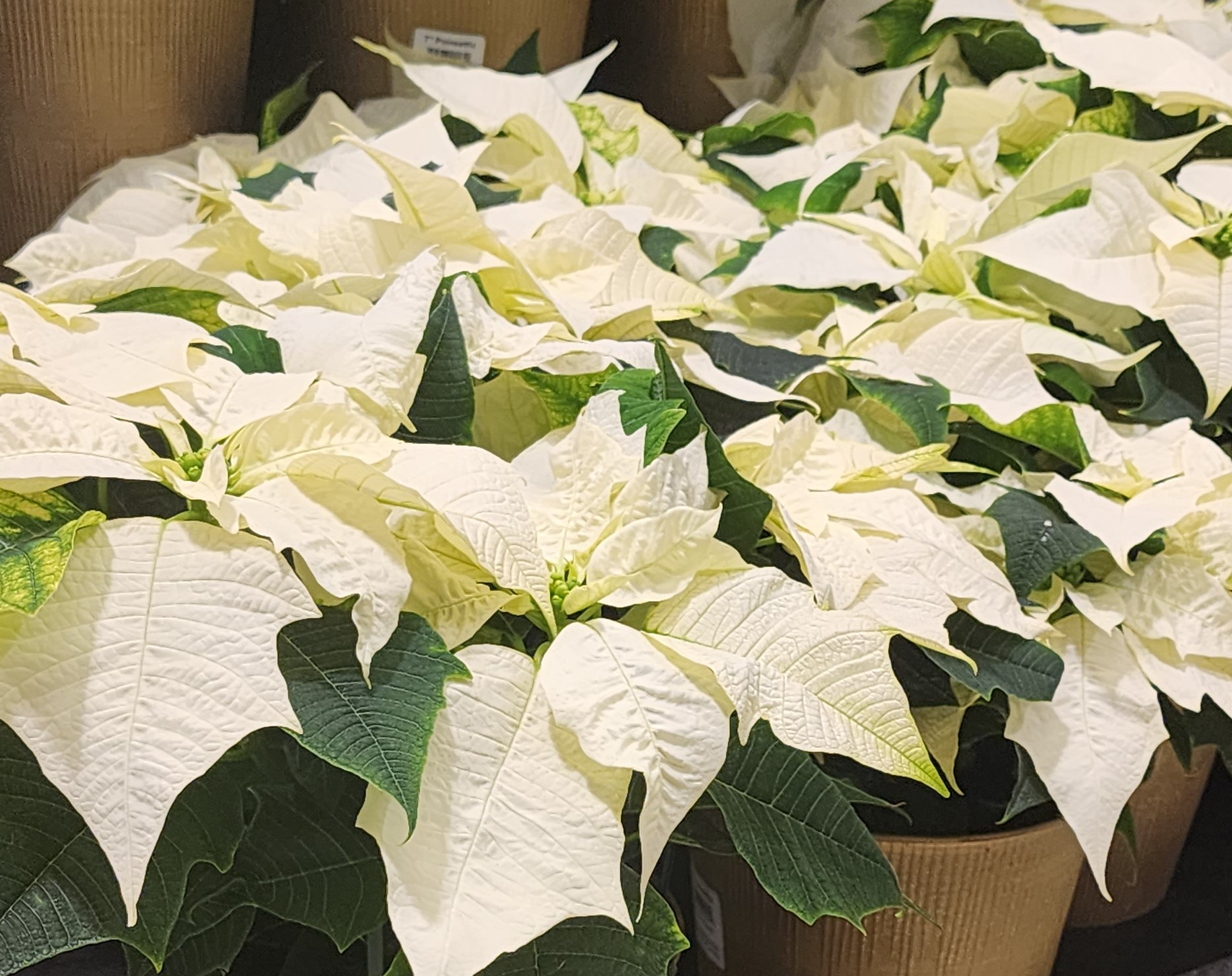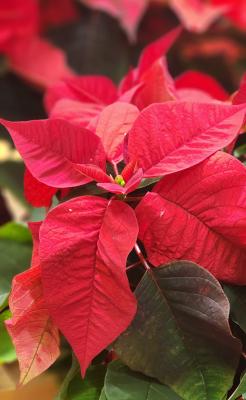Each year around this time, the supermarkets start stocking the Poinsetta, and many a fund raiser has benefited from this festive plant. Even though we think of it as a flower, it is really a plant with the top leaves turning red. The colors of the bracts (modified leaves) are created through photoperiodism, meaning that they require darkness (at least fourteen hours at a time for 6–8 weeks in a row) to change color. In a time where there are few fresh flowers available, the poinsetta with its bright red top leaves has become very popular - very smart evolutionary move by this plant!
Wild poinsettias occur from Mexico to southern Guatemala, growing on mid-elevation, Pacific-facing slopes. They were cultivated by the Aztecs for use in traditional medicine and for a purple dye.
It derives its common English name from Joel Roberts Poinsett, botanist and first United States minister to Mexico, who is credited with introducing the plant to the US in the 1820s. Possibly as early as 1826, Poinsett began sending poinsettias from Mexico back to his greenhouses in South Carolina. Prior to poinsettia, it was known as "Mexican flame flower" or "painted leaf"

There are many origin stories for how this plant became especially associated with winter and the Christmas season. The one that to me seems the most believable is that missionaries to Mexico, where the poinsetta is a native plant, couldn’t find holly with which to decorate their manger scenes, as was tradition in England, so they substituted the red and green of the poinsettia instead.
Over time, believers in Mexico decided that the flower-like bracts looked like the Star of Bethlehem stained red by the blood of Christ, and the plant became a common sight in churches in Mexico during the holidays.
The plant probably wouldn’t have caught on as indoor holiday decor if not for Paul Ecke, a self-taught breeder based in California who grafted the original shrubs onto naturally smaller specimens to make something more compact. Establishing his business in 1909, he saw an opening in the market for potted flowers. He worked to create a tougher plant that had more of the colorful bracts than the species and that was compact enough to grow and be shipped in containers. Realizing that he had a potential moneymaker on his hands, he titled his creation the “Christmas Flower” and set about making it famous.
Throughout the 1920s, he sent the potted specimens to television programs, which used them as background interest on their sets – and some continued to do so into the 2000s. If you’ve ever seen the massive poinsettia display in the background of Johnny Carson’s The Tonight Show, you were looking at Ecke’s efforts.
There are now many varieties and shapes commercially available, including white poinsettas.

Sources and big thanks to:
- https://en.wikipedia.org/wiki/Poinsettia
- https://www.almanac.com/poinsettia-christmas-story
- https://gardenerspath.com/plants/houseplants/poinsettias-christmas/
- https://www.whychristmas.com/


Add new comment